Презентация introduction of anatomy

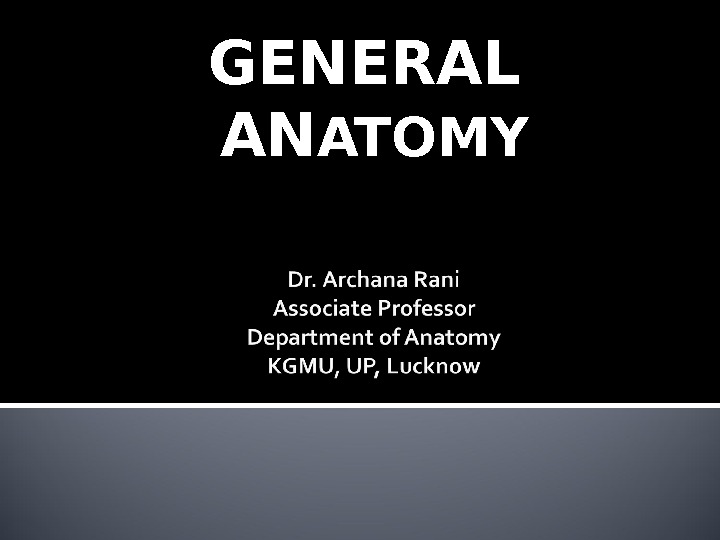

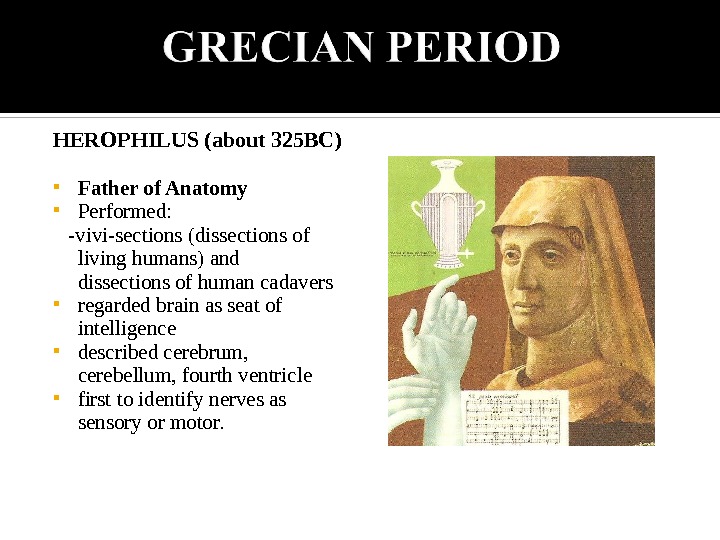
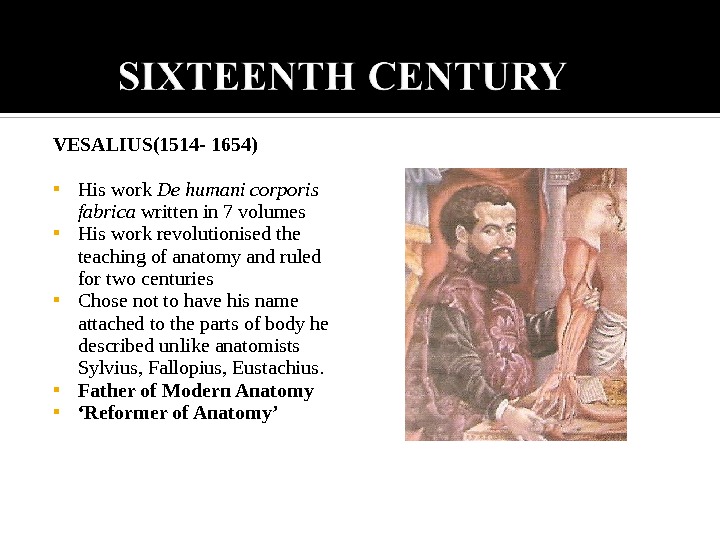

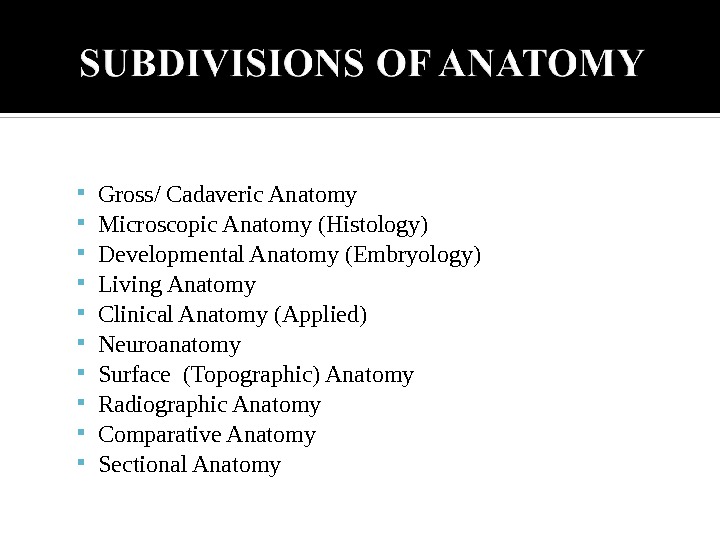
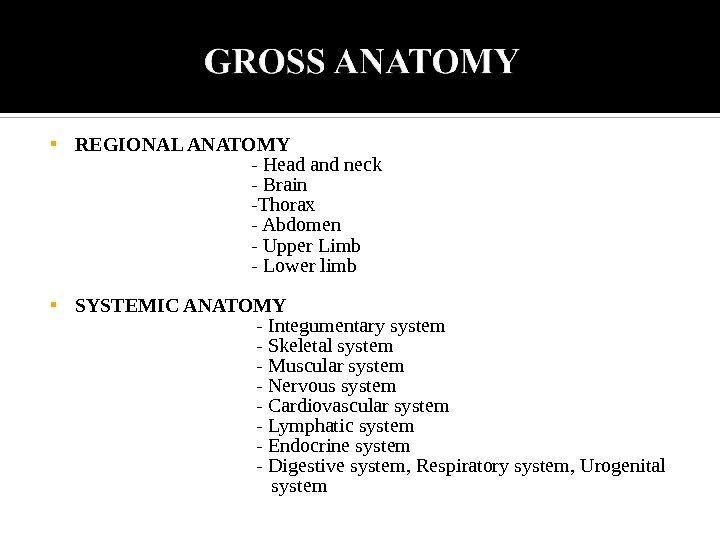
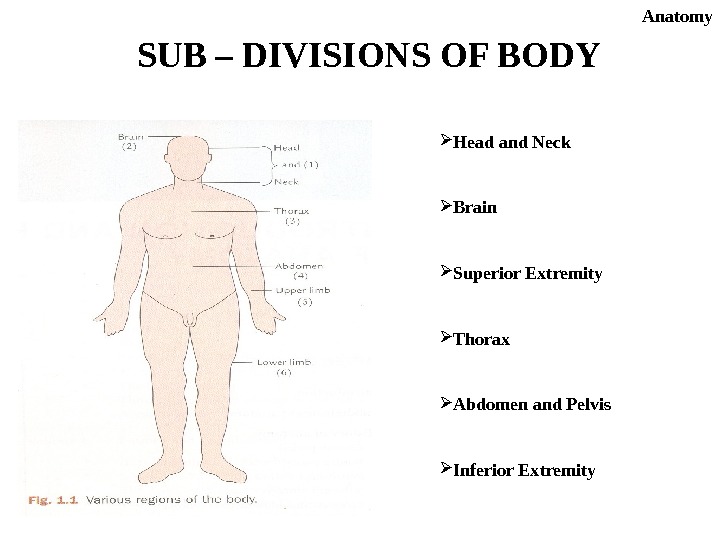
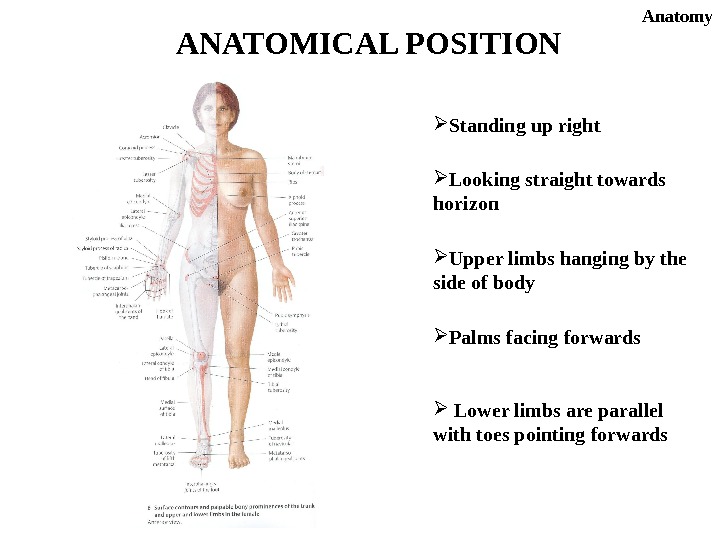

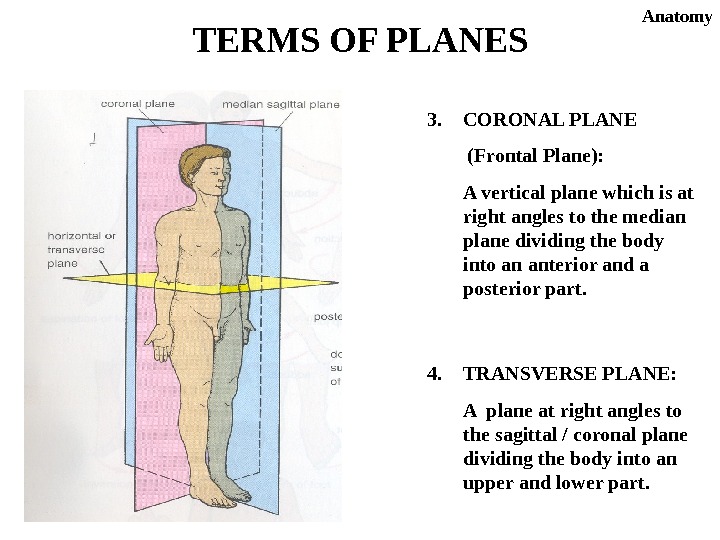
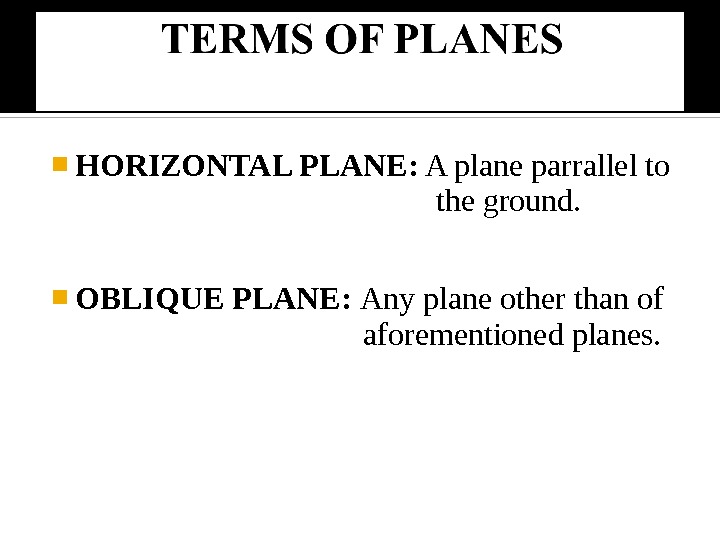
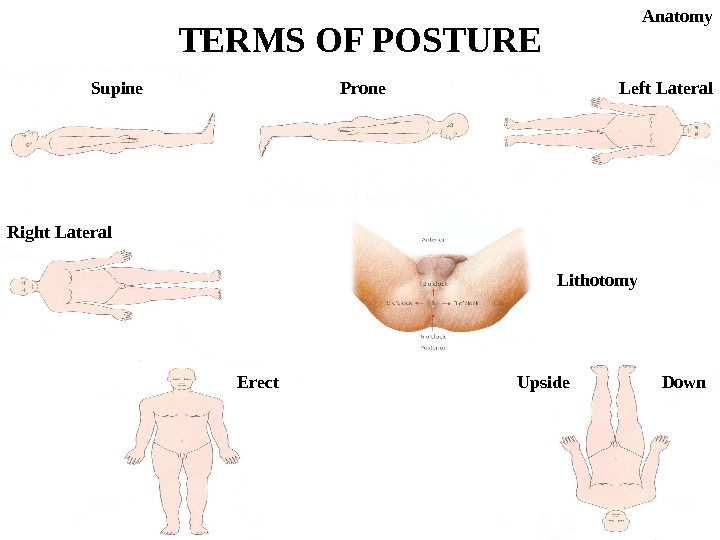

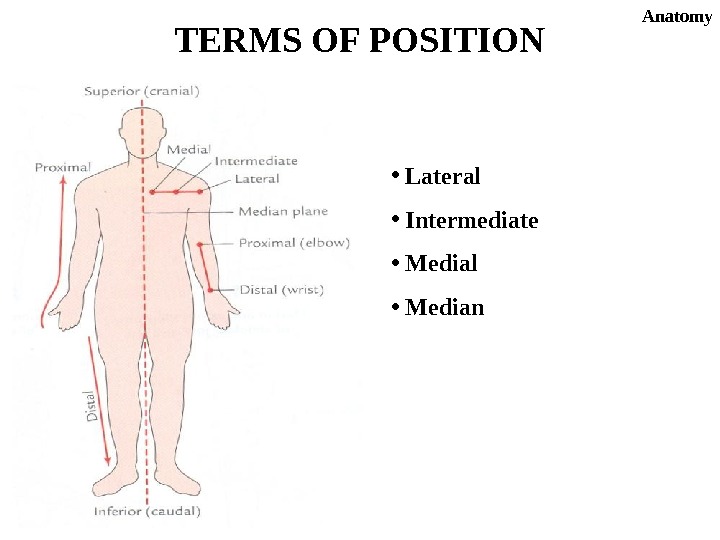
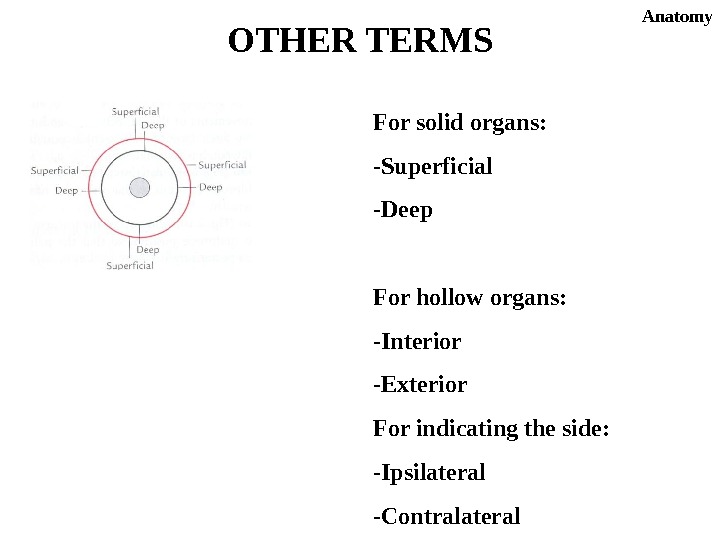

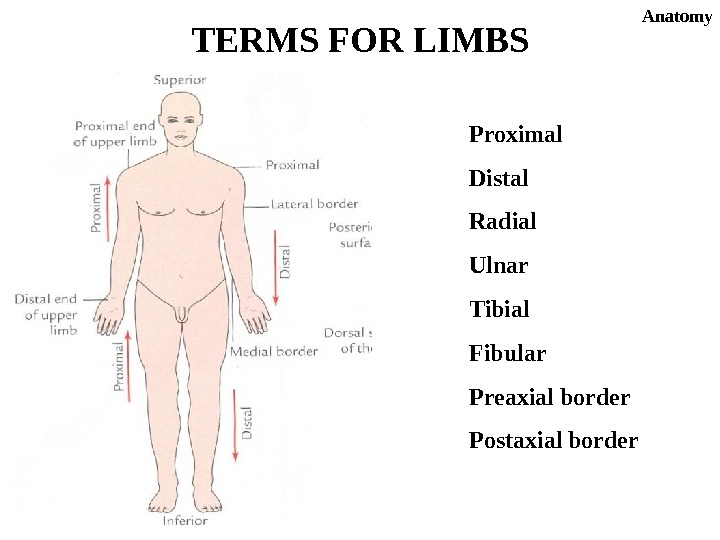
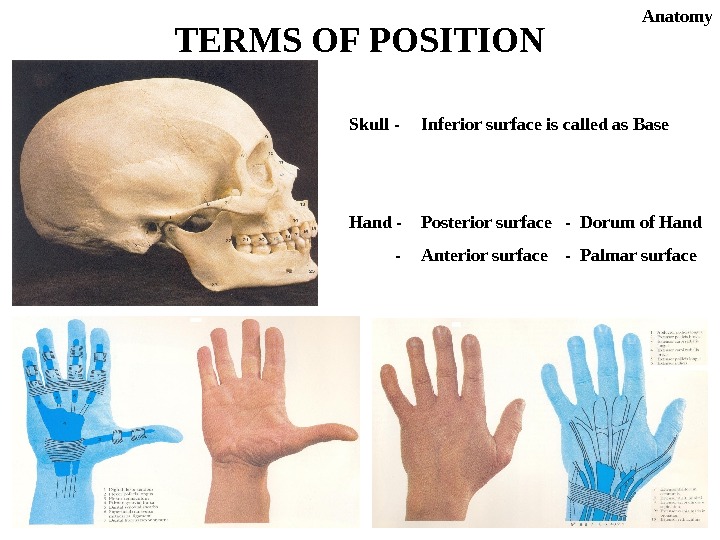
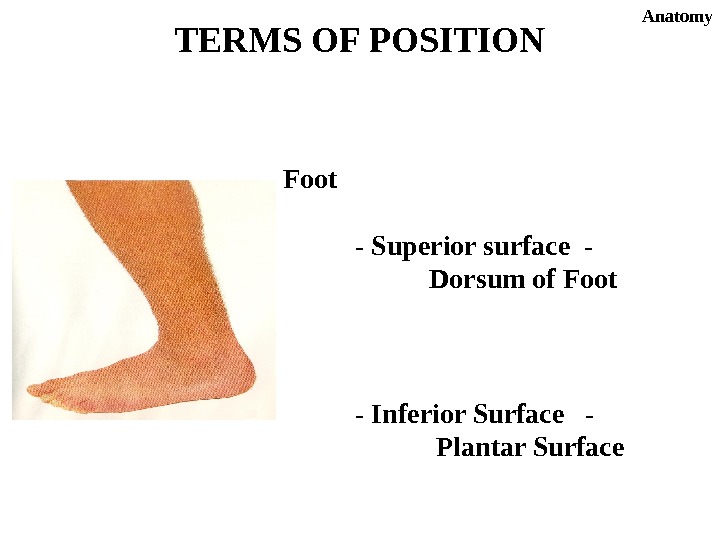
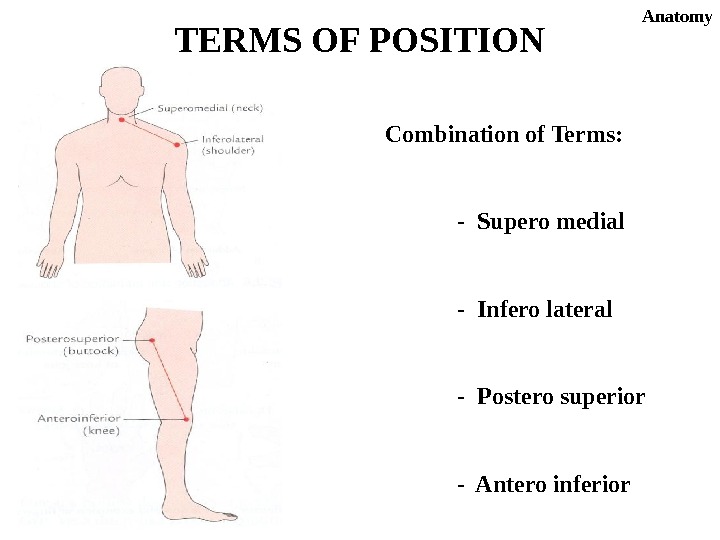

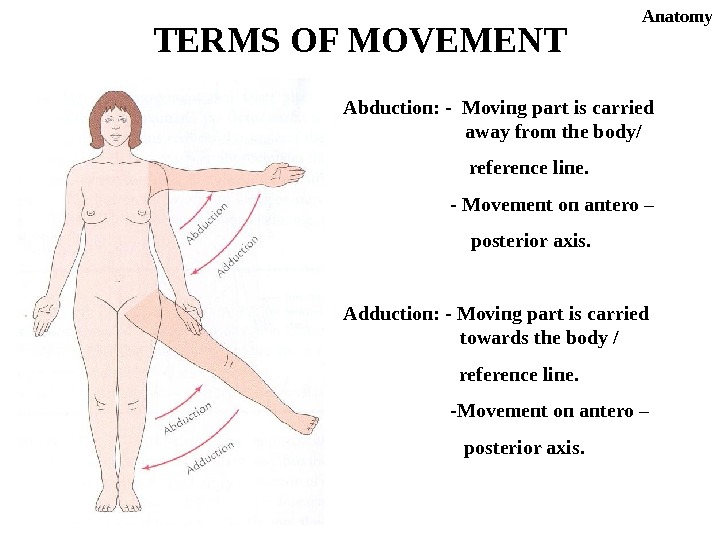
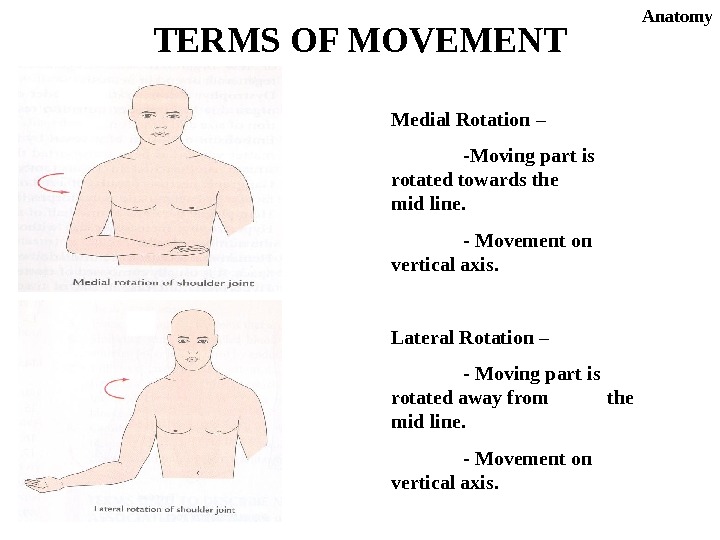
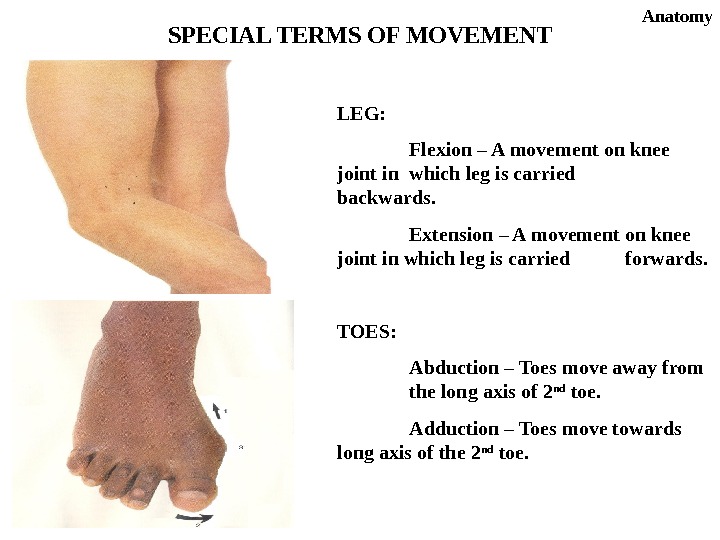

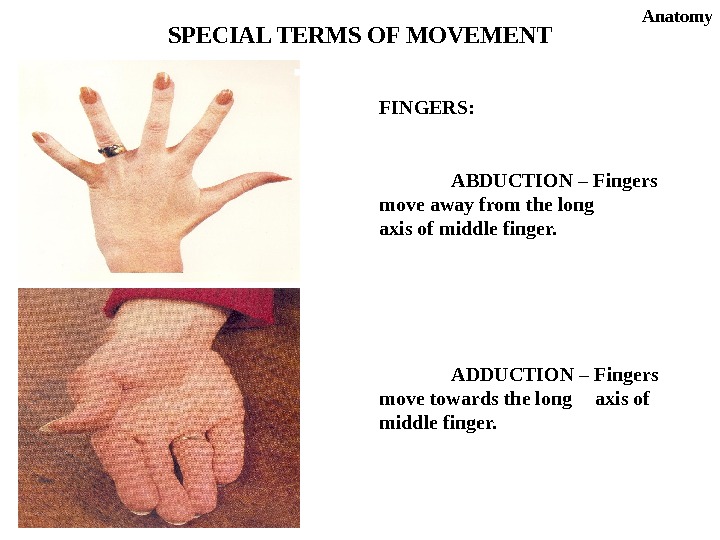
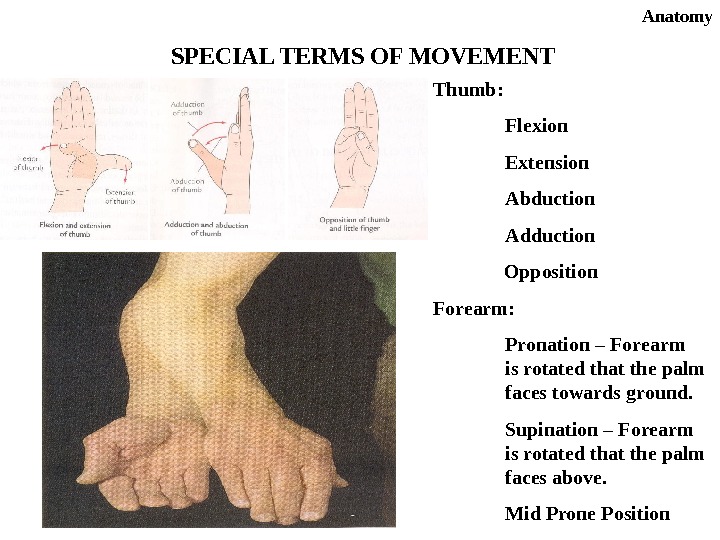

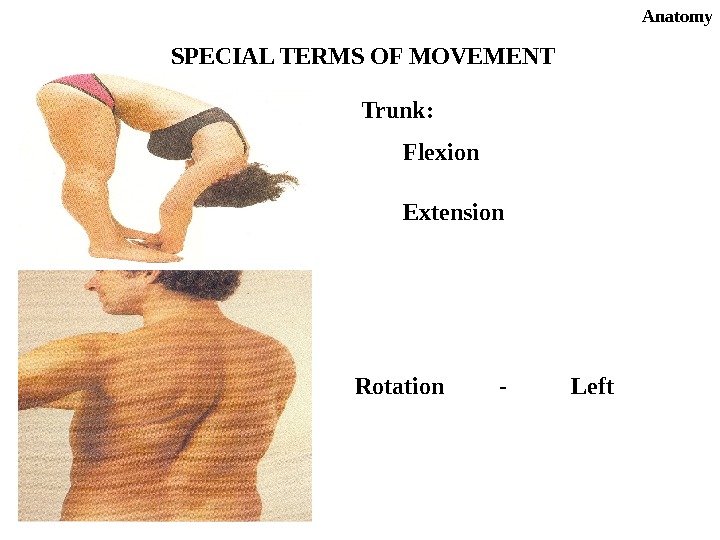
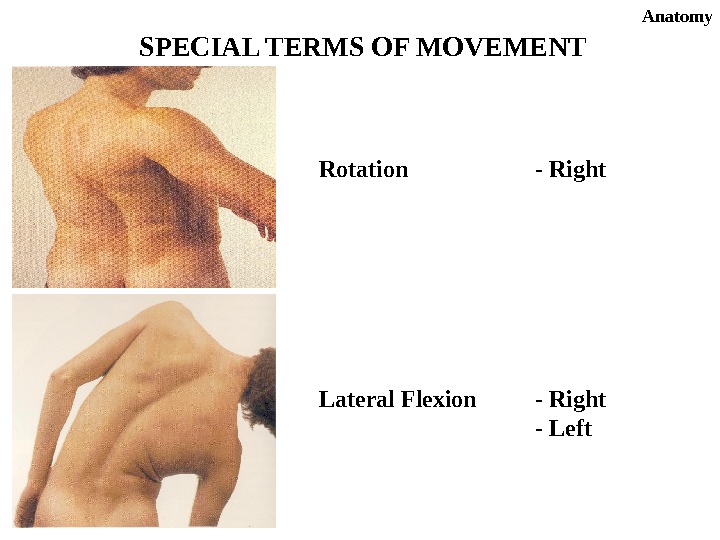
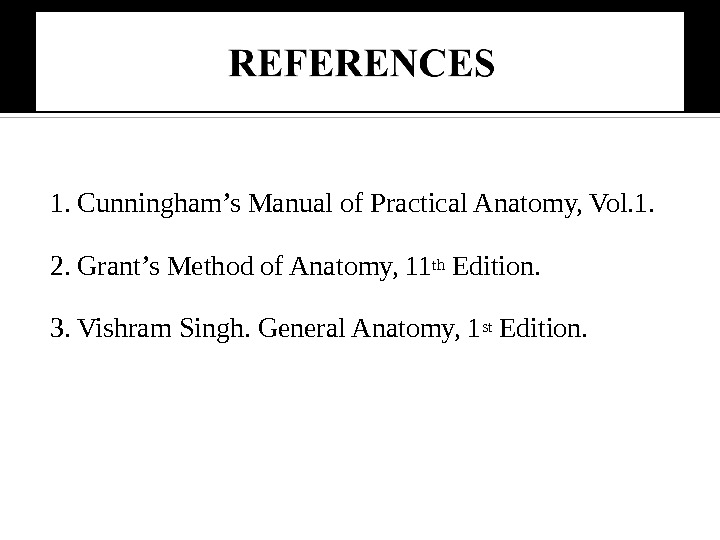
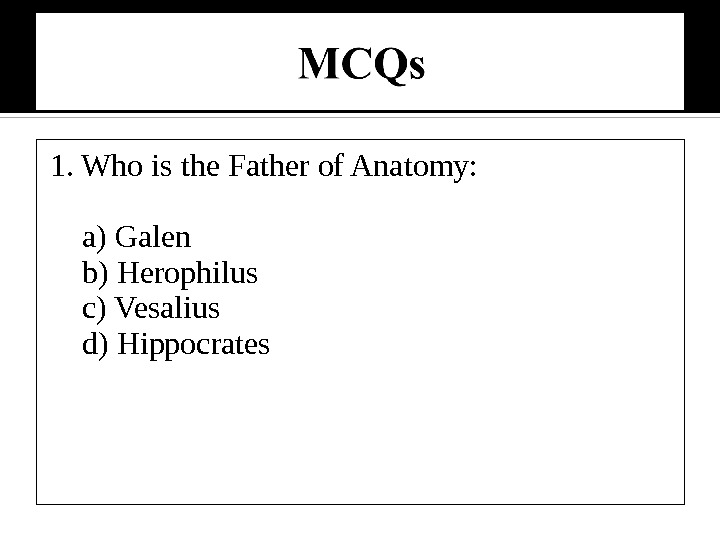
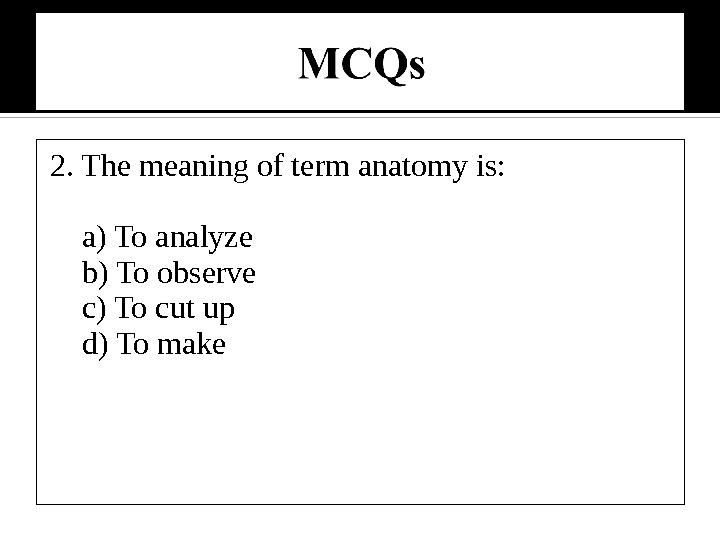
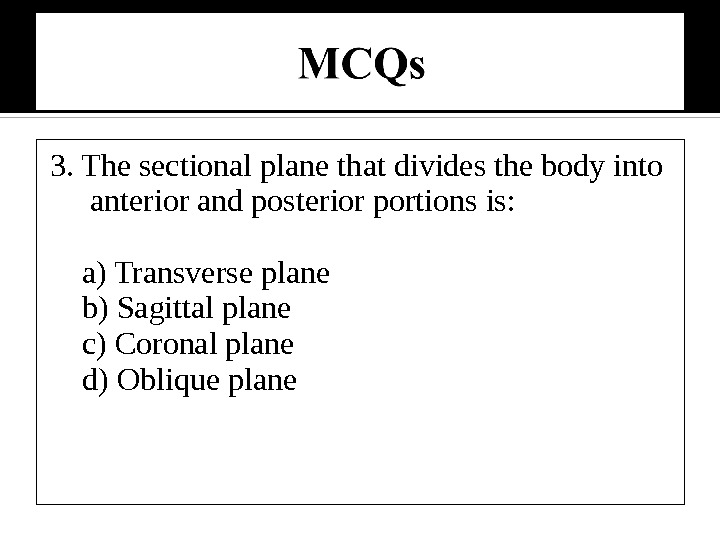
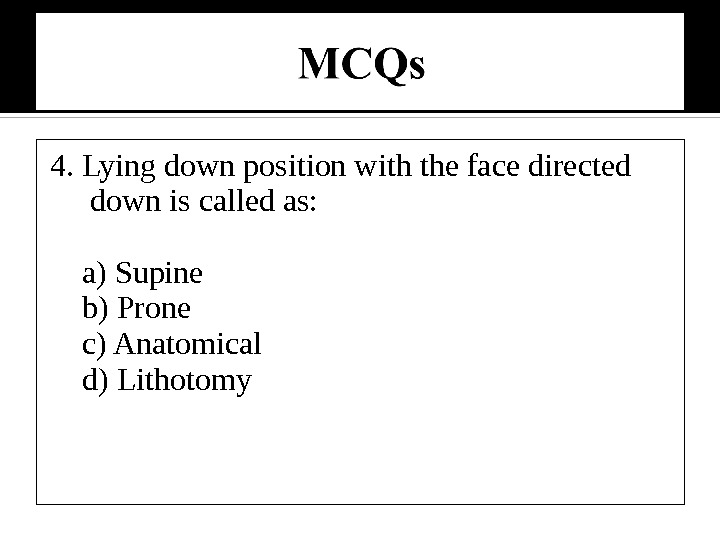
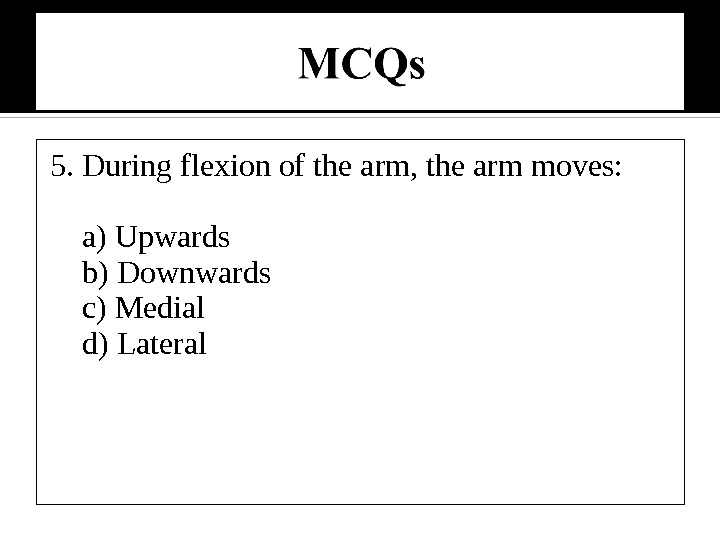
- Размер: 6.4 Mегабайта
- Количество слайдов: 37
Описание презентации Презентация introduction of anatomy по слайдам
 GENERAL AN ATOMY
GENERAL AN ATOMY
 HIPPOCRATES(460 -377 BC) Greek physician Father of Medicine His name is memorialized in the Hippocratic oath Humoral theory : Four body humors – -blood . -phlegum -yellow bile -black bile Attributed diseases to natural causes.
HIPPOCRATES(460 -377 BC) Greek physician Father of Medicine His name is memorialized in the Hippocratic oath Humoral theory : Four body humors – -blood . -phlegum -yellow bile -black bile Attributed diseases to natural causes.
 HEROPHILUS (about 325 BC) Father of Anatomy Performed: -vivi-sections (dissections of living humans) and — dissections of human cadavers regarded brain as seat of intelligence described cerebrum, cerebellum, fourth ventricle first to identify nerves as sensory or motor.
HEROPHILUS (about 325 BC) Father of Anatomy Performed: -vivi-sections (dissections of living humans) and — dissections of human cadavers regarded brain as seat of intelligence described cerebrum, cerebellum, fourth ventricle first to identify nerves as sensory or motor.
 VESALIUS(1514 — 1654) His work De humani corporis fabrica written in 7 volumes His work revolutionised the teaching of anatomy and ruled for two centuries Chose not to have his name attached to the parts of body he described unlike anatomists Sylvius, Fallopius, Eustachius. Father of Modern Anatomy ‘ Reformer of Anatomy’
VESALIUS(1514 — 1654) His work De humani corporis fabrica written in 7 volumes His work revolutionised the teaching of anatomy and ruled for two centuries Chose not to have his name attached to the parts of body he described unlike anatomists Sylvius, Fallopius, Eustachius. Father of Modern Anatomy ‘ Reformer of Anatomy’
 GENERAL ANATOMY Anatomy = Ana (Gr) Tome (Gr) Apart To Cut Dissection = Dissecare (Latin) To cut apart Anatomy
GENERAL ANATOMY Anatomy = Ana (Gr) Tome (Gr) Apart To Cut Dissection = Dissecare (Latin) To cut apart Anatomy
 Gross/ Cadaveric Anatomy Microscopic Anatomy (Histology) Developmental Anatomy (Embryology) Living Anatomy Clinical Anatomy (Applied) Neuroanatomy Surface (Topographic) Anatomy Radiographic Anatomy Comparative Anatomy Sectional Anatomy
Gross/ Cadaveric Anatomy Microscopic Anatomy (Histology) Developmental Anatomy (Embryology) Living Anatomy Clinical Anatomy (Applied) Neuroanatomy Surface (Topographic) Anatomy Radiographic Anatomy Comparative Anatomy Sectional Anatomy
 REGIONAL ANATOMY — Head and neck — Brain -Thorax — Abdomen — Upper Limb — Lower limb SYSTEMIC ANATOMY — Integumentary system — Skeletal system — Muscular system — Nervous system — Cardiovascular system — Lymphatic system — Endocrine system — Digestive system, Respiratory system, Urogenital system
REGIONAL ANATOMY — Head and neck — Brain -Thorax — Abdomen — Upper Limb — Lower limb SYSTEMIC ANATOMY — Integumentary system — Skeletal system — Muscular system — Nervous system — Cardiovascular system — Lymphatic system — Endocrine system — Digestive system, Respiratory system, Urogenital system
 SUB – DIVISIONS OF BODY Head and Neck Brain Superior Extremity Thorax Abdomen and Pelvis Inferior Extremity Anatomy
SUB – DIVISIONS OF BODY Head and Neck Brain Superior Extremity Thorax Abdomen and Pelvis Inferior Extremity Anatomy
 ANATOMICAL POSITION Standing up right Looking straight towards horizon Upper limbs hanging by the side of body Palms facing forwards Lower limbs are parallel with toes pointing forwards Anatomy
ANATOMICAL POSITION Standing up right Looking straight towards horizon Upper limbs hanging by the side of body Palms facing forwards Lower limbs are parallel with toes pointing forwards Anatomy
 1. MID SAGITTAL (Median Plane): A vertical plane dividing the body into right and left equal halves. 2. SAGITTAL: A vertical plane which is parallel to the sagittal plane. TERMS OF PLANES Anatomy
1. MID SAGITTAL (Median Plane): A vertical plane dividing the body into right and left equal halves. 2. SAGITTAL: A vertical plane which is parallel to the sagittal plane. TERMS OF PLANES Anatomy
 3. CORONAL PLANE (Frontal Plane): A vertical plane which is at right angles to the median plane dividing the body into an anterior and a posterior part. 4. TRANSVERSE PLANE: A plane at right angles to the sagittal / coronal plane dividing the body into an upper and lower part. TERMS OF PLANES Anatomy
3. CORONAL PLANE (Frontal Plane): A vertical plane which is at right angles to the median plane dividing the body into an anterior and a posterior part. 4. TRANSVERSE PLANE: A plane at right angles to the sagittal / coronal plane dividing the body into an upper and lower part. TERMS OF PLANES Anatomy
 HORIZONTAL PLANE: A plane parrallel to the ground. OBLIQUE PLANE: Any plane other than of aforementioned planes.
HORIZONTAL PLANE: A plane parrallel to the ground. OBLIQUE PLANE: Any plane other than of aforementioned planes.
 TERMS OF POSTURE Anatomy Supine Prone Left Lateral Right Lateral Lithotomy Erect Upside Down
TERMS OF POSTURE Anatomy Supine Prone Left Lateral Right Lateral Lithotomy Erect Upside Down
 Anterior = Ventral Intermediate = Middle Posterior = Dorsal. TERMS OF POSITION Anatomy
Anterior = Ventral Intermediate = Middle Posterior = Dorsal. TERMS OF POSITION Anatomy
 • Lateral • Intermediate • Medial • Median. TERMS OF POSITION Anatomy
• Lateral • Intermediate • Medial • Median. TERMS OF POSITION Anatomy
 For solid organs: -Superficial -Deep For hollow organs: -Interior -Exterior For indicating the side: -Ipsilateral -Contralateral. OTHER TERMS Anatomy
For solid organs: -Superficial -Deep For hollow organs: -Interior -Exterior For indicating the side: -Ipsilateral -Contralateral. OTHER TERMS Anatomy
 Superior = Cephalic Inferior = Caudal. TERMS OF POSITION Anatomy
Superior = Cephalic Inferior = Caudal. TERMS OF POSITION Anatomy
 Proximal Distal Radial Ulnar Tibial Fibular Preaxial border Postaxial border. TERMS FOR LIMBS Anatomy
Proximal Distal Radial Ulnar Tibial Fibular Preaxial border Postaxial border. TERMS FOR LIMBS Anatomy
 Skull — Inferior surface is called as Base Hand — Posterior surface — Dorum of Hand — Anterior surface — Palmar surface. TERMS OF POSITION Anatomy
Skull — Inferior surface is called as Base Hand — Posterior surface — Dorum of Hand — Anterior surface — Palmar surface. TERMS OF POSITION Anatomy
 TERMS OF POSITION Anatomy Foot — Superior surface — Dorsum of Foot — Inferior Surface — Plantar Surface.
TERMS OF POSITION Anatomy Foot — Superior surface — Dorsum of Foot — Inferior Surface — Plantar Surface.
 Combination of Terms: — Supero medial — Infero lateral — Postero superior — Antero inferior. TERMS OF POSITION Anatomy
Combination of Terms: — Supero medial — Infero lateral — Postero superior — Antero inferior. TERMS OF POSITION Anatomy
 Flexion: — Moving part is carried forwards — Movement on the transverse axis Extension- Moving part is carried backwards — Movement on the transverse axis. Circumduction: Moving part forms the base of a cone. TERMS OF MOVEMENT Anatomy
Flexion: — Moving part is carried forwards — Movement on the transverse axis Extension- Moving part is carried backwards — Movement on the transverse axis. Circumduction: Moving part forms the base of a cone. TERMS OF MOVEMENT Anatomy
 Abduction: — Moving part is carried away from the body/ reference line. — Movement on antero – posterior axis. Adduction: — Moving part is carried towards the body / reference line. -Movement on antero – posterior axis. TERMS OF MOVEMENT Anatomy
Abduction: — Moving part is carried away from the body/ reference line. — Movement on antero – posterior axis. Adduction: — Moving part is carried towards the body / reference line. -Movement on antero – posterior axis. TERMS OF MOVEMENT Anatomy
 Medial Rotation – -Moving part is rotated towards the mid line. — Movement on vertical axis. Lateral Rotation – — Moving part is rotated away from the mid line. — Movement on vertical axis. TERMS OF MOVEMENT Anatomy
Medial Rotation – -Moving part is rotated towards the mid line. — Movement on vertical axis. Lateral Rotation – — Moving part is rotated away from the mid line. — Movement on vertical axis. TERMS OF MOVEMENT Anatomy
 LEG: Flexion – A movement on knee joint in which leg is carried backwards. Extension – A movement on knee joint in which leg is carried forwards. TOES: Abduction – Toes move away from the long axis of 2 nd toe. Adduction – Toes move towards long axis of the 2 nd toe. SPECIAL TERMS OF MOVEMENT Anatomy
LEG: Flexion – A movement on knee joint in which leg is carried backwards. Extension – A movement on knee joint in which leg is carried forwards. TOES: Abduction – Toes move away from the long axis of 2 nd toe. Adduction – Toes move towards long axis of the 2 nd toe. SPECIAL TERMS OF MOVEMENT Anatomy
 NECK: — Flexion — Extension ROTATION : — Right — Left — LATERAL FLEXION — Right — Left. SPECIAL TERMS OF MOVEMENT Anatomy
NECK: — Flexion — Extension ROTATION : — Right — Left — LATERAL FLEXION — Right — Left. SPECIAL TERMS OF MOVEMENT Anatomy
 FINGERS: ABDUCTION – Fingers move away from the long axis of middle finger. ADDUCTION – Fingers move towards the long axis of middle finger. SPECIAL TERMS OF MOVEMENT Anatomy
FINGERS: ABDUCTION – Fingers move away from the long axis of middle finger. ADDUCTION – Fingers move towards the long axis of middle finger. SPECIAL TERMS OF MOVEMENT Anatomy
 Anatomy SPECIAL TERMS OF MOVEMENT Thumb: Flexion Extension Abduction Adduction Opposition Forearm: Pronation – Forearm is rotated that the palm faces towards ground. Supination – Forearm is rotated that the palm faces above. Mid Prone Position
Anatomy SPECIAL TERMS OF MOVEMENT Thumb: Flexion Extension Abduction Adduction Opposition Forearm: Pronation – Forearm is rotated that the palm faces towards ground. Supination – Forearm is rotated that the palm faces above. Mid Prone Position
 Anatomy SPECIAL TERMS OF MOVEMENT FOOT – Inversion – Sole of the foot faces medially. Eversion – Sole of the foot faces laterally. Dorsiflexion – A movement of foot in which the dorsal surface of foot comes closure to the front of leg. Plantarflexion – A movement of foot in which the dorsal surface of foot goes away from the front of leg.
Anatomy SPECIAL TERMS OF MOVEMENT FOOT – Inversion – Sole of the foot faces medially. Eversion – Sole of the foot faces laterally. Dorsiflexion – A movement of foot in which the dorsal surface of foot comes closure to the front of leg. Plantarflexion – A movement of foot in which the dorsal surface of foot goes away from the front of leg.
 Anatomy SPECIAL TERMS OF MOVEMENT Trunk: Extension. Flexion Rotation — Left
Anatomy SPECIAL TERMS OF MOVEMENT Trunk: Extension. Flexion Rotation — Left
 Anatomy Rotation — Right Lateral Flexion — Right — Left. SPECIAL TERMS OF MOVEMENT
Anatomy Rotation — Right Lateral Flexion — Right — Left. SPECIAL TERMS OF MOVEMENT
 1. Cunningham’s Manual of Practical Anatomy, Vol. 1. 2. Grant’s Method of Anatomy, 11 th Edition. 3. Vishram Singh. General Anatomy, 1 st Edition.
1. Cunningham’s Manual of Practical Anatomy, Vol. 1. 2. Grant’s Method of Anatomy, 11 th Edition. 3. Vishram Singh. General Anatomy, 1 st Edition.
 1. Who is the Father of Anatomy: a) Galen b) Herophilus c) Vesalius d) Hippocrates
1. Who is the Father of Anatomy: a) Galen b) Herophilus c) Vesalius d) Hippocrates
 2. The meaning of term anatomy is: a) To analyze b) To observe c) To cut up d) To make
2. The meaning of term anatomy is: a) To analyze b) To observe c) To cut up d) To make
 3. The sectional plane that divides the body into anterior and posterior portions is: a) Transverse plane b) Sagittal plane c) Coronal plane d) Oblique plane
3. The sectional plane that divides the body into anterior and posterior portions is: a) Transverse plane b) Sagittal plane c) Coronal plane d) Oblique plane
 4. Lying down position with the face directed down is called as: a) Supine b) Prone c) Anatomical d) Lithotomy
4. Lying down position with the face directed down is called as: a) Supine b) Prone c) Anatomical d) Lithotomy
 5. During flexion of the arm, the arm moves: a) Upwards b) Downwards c) Medial d) Lateral
5. During flexion of the arm, the arm moves: a) Upwards b) Downwards c) Medial d) Lateral

